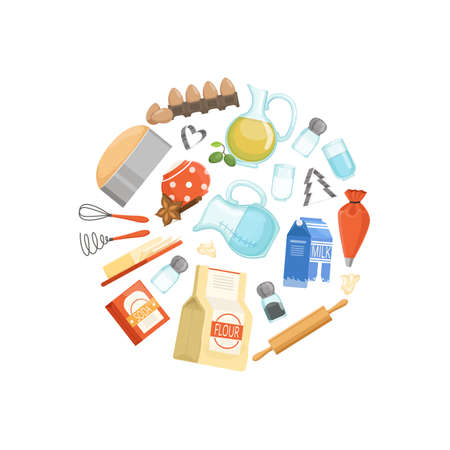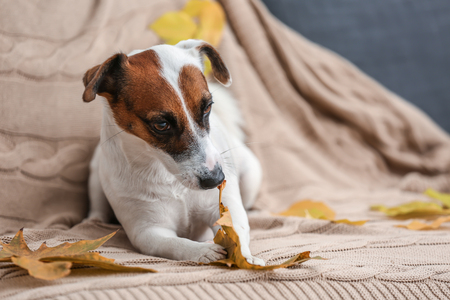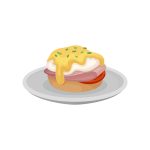1. Key Ingredients to Look for in Quality Cat Food
Choosing the right cat food is essential for your feline friends health and well-being. Veterinarians recommend looking for high-quality ingredients that provide balanced nutrition. Here are some key components to consider when selecting a nutritious cat food.
High-Quality Protein Sources
Cats are obligate carnivores, meaning they require animal-based protein to thrive. Look for these protein sources in your cats food:
| Protein Source | Benefits |
|---|---|
| Chicken | Rich in lean protein and essential amino acids |
| Turkey | Easy to digest and supports muscle development |
| Fish (Salmon, Tuna) | Packed with omega-3 fatty acids for skin and coat health |
| Beef | A good source of iron and protein |
| Lamb | Easily digestible and ideal for cats with food sensitivities |
Essential Vitamins and Minerals
A balanced diet should include vital vitamins and minerals to support overall health. These nutrients play a crucial role in your cat’s body functions:
- Taurine: Essential for heart health, vision, and digestion.
- Vitamin A: Supports eye health and immune function.
- Calcium & Phosphorus: Important for strong bones and teeth.
- Omega-3 & Omega-6 Fatty Acids: Promote healthy skin and a shiny coat.
- B Vitamins: Help with energy production and metabolism.
No Artificial Additives or Fillers
Avoid foods that contain artificial preservatives, colors, or fillers like corn, wheat, and soy. These ingredients provide little nutritional value and may cause allergies or digestive issues in some cats.
Moisture Content Matters
Cats naturally have low thirst drives, so incorporating wet food into their diet can help with hydration. High-moisture foods support kidney function and urinary tract health.
Selecting the Best Food for Your Cat
When choosing a cat food, always check the ingredient list and ensure it meets the nutritional needs of your pet. High-quality protein, essential vitamins, minerals, and proper moisture content all contribute to a well-balanced diet that keeps your cat happy and healthy.
2. Grain-Free vs. Grain-Inclusive: Which Is Better?
When choosing the best food for your cat, you might wonder whether a grain-free or grain-inclusive diet is the better option. Both have their pros and cons, and the right choice depends on your cat’s unique needs.
Grain-Free Cat Food
Grain-free diets eliminate common grains like wheat, corn, and rice, replacing them with alternative carbohydrates such as sweet potatoes or peas.
Pros of Grain-Free Diets
- May benefit cats with grain allergies or sensitivities
- Often contains higher protein content
- Mimics a cats natural ancestral diet
Cons of Grain-Free Diets
- Can be more expensive than grain-inclusive options
- Some substitutes (like peas and potatoes) may not be ideal for all cats
- No scientific evidence proving grains are harmful to most cats
Grain-Inclusive Cat Food
Grain-inclusive foods contain ingredients like brown rice, barley, and oatmeal, providing fiber and essential nutrients.
Pros of Grain-Inclusive Diets
- A balanced source of fiber for digestion
- More affordable compared to grain-free diets
- No proven health risks for most cats
Cons of Grain-Inclusive Diets
- May cause issues for cats with specific grain allergies (though rare)
- Lower protein content compared to some grain-free formulas
Which Option Is Best for Your Cat?
The best choice depends on your cat’s health and dietary needs. If your feline has a known grain allergy or sensitivity, a grain-free diet might be beneficial. However, if your cat thrives on a balanced diet that includes grains, there’s no need to avoid them.
Comparison Table: Grain-Free vs. Grain-Inclusive Cat Food
| Feature | Grain-Free | Grain-Inclusive |
|---|---|---|
| Main Ingredients | No grains; uses alternatives like peas & sweet potatoes | Includes grains like rice, barley & oatmeal |
| Best For | Cats with grain allergies or sensitivities | Cats without known grain issues needing balanced nutrition |
| Protein Content | Typically higher in protein | Slightly lower protein levels but still balanced |
| Price Range | Tends to be more expensive | Generally more affordable |
| Nutritional Benefits | Mimics natural carnivorous diet; high protein & low carbs | Provides fiber & essential nutrients for overall health |
| Potential Downsides | No proven benefits for all cats; some ingredients may not be ideal (e.g., legumes) | Poor-quality grains in low-grade foods can lead to digestive issues |
If youre unsure which option is best, consult your veterinarian to determine the ideal diet based on your cat’s health, age, and lifestyle.

3. Wet Food vs. Dry Food: Finding the Right Balance
Choosing between wet and dry cat food can be a challenge for many pet owners. Each type has its own benefits and drawbacks, and finding the right balance is key to ensuring your cat gets a nutritious and well-rounded diet.
Benefits of Wet Cat Food
Wet food is often recommended by veterinarians because of its high moisture content, which helps keep cats hydrated and supports kidney health. It is also rich in protein and typically lower in carbohydrates, making it closer to a cat’s natural diet.
- Hydration: Helps prevent urinary tract issues and dehydration.
- High Protein: Supports muscle health and overall energy levels.
- Palatability: Often preferred by picky eaters due to its texture and aroma.
Benefits of Dry Cat Food
Dry food is convenient, easy to store, and can help maintain dental health by reducing plaque buildup. It also tends to be more affordable and can be left out for free-feeding without spoiling quickly.
- Convenience: Easier to store and serve with less mess.
- Dental Health: Crunchy texture may help reduce tartar buildup.
- Cost-Effective: Generally more affordable than wet food.
Comparing Wet and Dry Cat Food
| Feature | Wet Food | Dry Food |
|---|---|---|
| Moisture Content | High (around 70-80%) | Low (around 10%) |
| Protein Levels | Higher in animal-based protein | Varies, but may contain more plant-based fillers |
| Shelf Life | Shorter once opened | Longer shelf life even after opening |
| Dental Health Benefits | No significant impact on teeth cleaning | May help reduce plaque buildup |
| Cost | Tends to be more expensive per serving | More budget-friendly option |
| Picky Eaters | More appealing due to taste and texture | Might not be as enticing for some cats |
How to Find the Right Balance?
The best approach is often a mix of both wet and dry food. This combination ensures your cat gets the hydration benefits of wet food while still enjoying the convenience of dry kibble. Here are some tips for creating a balanced feeding routine:
1. Mix Both Types at Mealtime:
You can combine wet and dry food in the same bowl or offer them separately at different times of the day.
2. Follow Portion Guidelines:
Avoid overfeeding by checking portion recommendations based on your cat’s weight, age, and activity level.
3. Consider Your Cat’s Preferences:
If your cat prefers one type over the other, gradually introduce small amounts of the less favored option to encourage variety.
4. Consult Your Veterinarian:
Your vet can provide specific recommendations based on your cat’s health needs, dietary restrictions, and lifestyle.
By understanding the pros and cons of wet and dry food, you can make informed decisions that support your cat’s overall health and well-being.
4. Top Veterinarian-Approved Cat Food Brands
Choosing the right food for your cat can be overwhelming with so many options available. To make things easier, weve curated a list of veterinarian-approved cat food brands that provide high-quality nutrition and essential health benefits for your feline friend.
Why Veterinarians Recommend These Brands
Veterinarians consider several factors when recommending cat food, including ingredients, nutritional value, and overall benefits to a cat’s health. The best brands typically contain high-quality protein, essential vitamins, and no harmful additives.
Top Veterinarian-Approved Cat Food Brands
| Brand | Main Benefits | Why It Stands Out |
|---|---|---|
| Hill’s Science Diet | Supports digestive health, weight management, and overall well-being. | Developed by veterinarians with clinically proven ingredients. |
| Royal Canin | Tailored nutrition for specific breeds, ages, and health conditions. | Specialized formulas designed based on veterinary research. |
| Purina Pro Plan | Packed with high-quality protein and probiotics for digestive support. | Affordable yet nutritionally rich option recommended by vets. |
| Merrick Purrfect Bistro | Made with real meat and grain-free options for sensitive stomachs. | No artificial preservatives; great for cats with allergies. |
| Nutrish by Rachael Ray | No poultry by-products or artificial flavors; supports heart health. | A budget-friendly choice made with real ingredients. |
How to Choose the Right Brand for Your Cat
The best cat food brand depends on your pet’s specific needs. Consider factors like age, activity level, and any existing health concerns. Consulting your veterinarian is always the best way to ensure youre making the right choice for your furry companion.
5. Feeding Tips for a Healthier Cat
Ensuring your cat gets the right nutrition isnt just about picking the best food—its also about how you feed them. Proper portion control, a consistent feeding schedule, and adequate hydration all play key roles in maintaining your cat’s health and well-being.
Portion Control
Overfeeding is one of the most common causes of obesity in cats, which can lead to serious health issues like diabetes and joint problems. Follow these portion control tips to keep your cat at a healthy weight:
| Cats Weight | Recommended Daily Calories | Approximate Portion Size (Dry Food) |
|---|---|---|
| 5 lbs (2.3 kg) | 180-200 kcal | ¼ – ⅓ cup |
| 10 lbs (4.5 kg) | 230-270 kcal | ½ – ⅔ cup |
| 15 lbs (6.8 kg) | 280-320 kcal | ¾ – 1 cup |
The exact amount depends on your cat’s activity level, metabolism, and specific dietary needs. Always check the feeding guidelines on your cat food packaging and consult your veterinarian if youre unsure.
Establishing a Feeding Schedule
Cats thrive on routine, so feeding them at the same time every day can help regulate their metabolism and prevent overeating. Here are two common feeding methods:
Scheduled Meals:
- Best for: Weight management and portion control.
- Description: Feed your cat measured portions at set times, usually twice a day.
- Benefit: Helps monitor food intake and prevents obesity.
Free-Feeding:
- Best for: Cats that self-regulate their eating.
- Description: Food is available throughout the day, allowing cats to eat whenever they want.
- Caution: Can lead to overeating and weight gain if not monitored.
The Importance of Hydration
Cats often don’t drink enough water, which can lead to kidney issues and urinary tract infections. Here’s how to keep your cat properly hydrated:
- Mixed Diet: Incorporate wet food into their diet as it contains higher moisture content than dry kibble.
- Cats Prefer Fresh Water: Change their water daily and use a clean bowl.
- Cats Like Moving Water: Consider using a water fountain to encourage drinking.
- Add Water to Dry Food: If your cat eats dry kibble exclusively, adding a little water can increase moisture intake.
A well-balanced approach to portion control, feeding schedules, and hydration will help ensure your cat stays healthy and happy for years to come!


